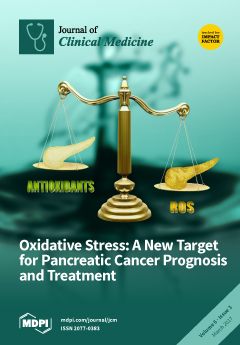We characterized the effect of systemic therapy given after portal vein embolization (PVE) and before hepatectomy on hepatic tumor and functional liver remnant (FLR) volumes. All 76 patients who underwent right PVE from 2002–2016 were retrospectively studied. Etiologies included colorectal cancer (
n = 44), hepatocellular carcinoma (
n = 17), cholangiocarcinoma (
n = 10), and other metastases (
n = 5). Imaging before and after PVE was assessed. Chart review revealed systemic therapy administration, SNaPshot genetic profiling, and comorbidities. Nine patients received systemic therapy; 67 did not. Tumor volume increased 28% in patients who did not receive and decreased −24% in patients who did receive systemic therapy (
p = 0.026), with no difference in FLR growth (28% vs. 34%;
p = 0.645). Among 30 patients with genetic profiling, 15 were wild type and 15 had mutations. Mutations were an independent predictor of tumor growth (
p = 0.049), but did not impact FLR growth (32% vs. 28%;
p = 0.93). Neither cirrhosis, hepatic steatosis, nor diabetes impacted changes in tumor or FLR volume (
p > 0.20). Systemic therapy administered after PVE before hepatic lobectomy had no effect on FLR growth; however, it was associated with decreasing tumor volumes. Continuing systemic therapy until hepatectomy may be warranted, particularly in patients with genetic mutations.
Full article






